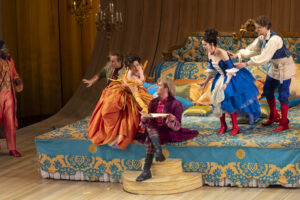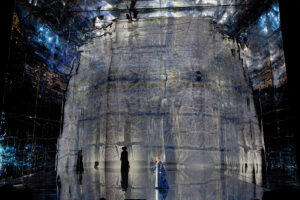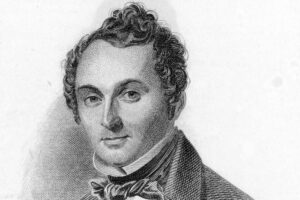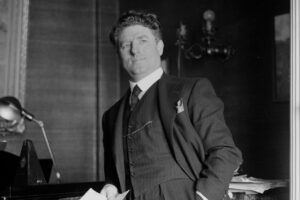

Donal Henahan in the New York Times:
Giuseppe Sinopoli, the conductor, made a puzzling Metropolitan debut. If he had affection for the score or sensitivity to its ebb and flow, one could not discern it. His rushed reading sustained a certain breathless momentum, but there was slight feeling for the idiomatic Puccini turn of phrase and little sense of communion with his singers.
Intermittently, the drama came together in traditional ways. The horrified Tosca’s exit, with cape swirling, in the second act, mirrored what was happening in the hushed and scuttling music, an effect often fluffed in routine “Tosca” performances. Too much of the time, however, Mr. Zeffirelli only succeeded in filling the space with distracting stage business. A minor complaint: In the first act Cavaradossi continually interrupts his painting duties to wipe his hands on a turpentine rag, after which he must fondle Tosca, who apparently doesn’t mind having her dress ruined. Big mistakes, however, are more characteristic of Mr. Zeffirelli’s direction: When Cornell MacNeil, the Scarpia, steps forward at the end of Act One with his “Va, Tosca,” the director fills the stage immediately behind him with so many miming church-going supernumeraries that it becomes impossible to pay attention to the police chief’s evil mutterings. Not since the Cafe Momus scene in Mr. Zeffirelli’s ”Bohème” has the Met stage supported so many extraneous bodies.
The scenery, designed by Mr. Zeffirelli, is sumptuous but, in the first two acts, remarkable chiefly for its monumentality and almost photographic realism. The final act, however, is something else. Designed purely as a coup de théâtre, it interrupts the flow of the opera and effectively destroys one of Puccini’s most successful essays in creating poetic atmosphere. It begins in the usual way with a scene on the ramparts of Castel Sant’ Angelo, but with the help of the stage elevators we are then transported to a dungeon where Cavaradossi and Tosca plot their escape. After Cavaradossi sings “E lucevan le stelle” in these murky surroundings, the dungeon drops and we are again on the ramparts. Nothing is gained by this Meyerbeerian stunt, and a good deal is lost. For one thing, the first-night audience felt impelled to interrupt the music with applause for Mr. Zeffirelli’s pointless ingenuity.


























Comments